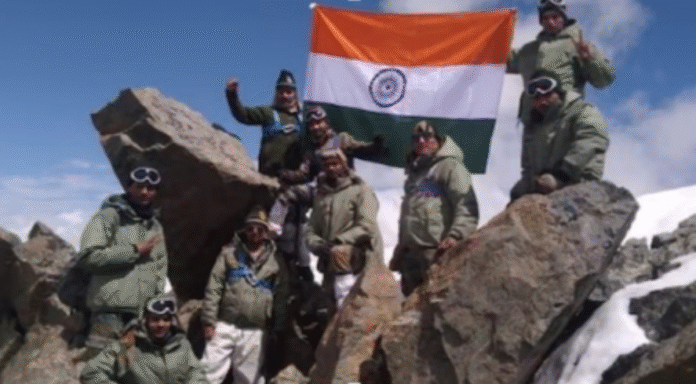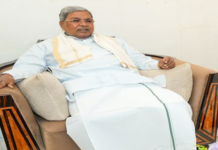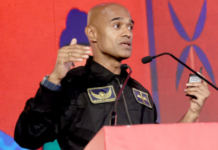NEW DELHI– Twenty-six years ago, the Kargil conflict shook India to its core. What was initially believed to be a militant intrusion across the Line of Control (LoC) in Jammu and Kashmir was soon revealed as a covert military operation—Operation Badr—executed by the Pakistan Army. Armed intruders had seized high-altitude positions on Indian soil, intending to cut off the Indian military’s access to Siachen, sever supply lines, and facilitate the eventual occupation of Kashmir.
This brazen act came just months after the Lahore Declaration—a peace accord signed by India and Pakistan to resolve disputes through dialogue and mutual respect. Pakistan’s betrayal triggered India’s powerful counteroffensive: Operation Vijay.
The summer of 1999 marked the first conventional war between two nuclear-armed nations. But what set the Kargil War apart was its unforgiving terrain and brutal conditions. Spread across a 170-kilometer stretch of the Himalayan frontier, Indian troops faced not just entrenched enemy forces but extreme altitudes, icy cliffs, and oxygen-deprived air. Despite these overwhelming odds, Indian soldiers mounted daring uphill assaults—climbing 8,000 to 18,000 feet under enemy fire to reclaim strategic peaks. It was a war of endurance, ingenuity, and sheer willpower, and it became one of the most iconic military victories in India’s history.
The Indian Army entered the conflict without adequate high-altitude gear, yet triumphed through rigorous training, adaptability, and an indomitable spirit. What truly defined the victory, however, was the extraordinary courage and camaraderie of its soldiers. These qualities came to life in the now-immortal words of Captain Vikram Batra of the 13 J&K Rifles—“Yeh Dil Maange More”—radioed after the recapture of Point 5140. Captain Batra, just 24, later laid down his life during the assault on Point 4875 in the Mushkoh Valley while rescuing a fellow soldier. His bravery earned him the Param Vir Chakra, India’s highest military honor.
Nineteen-year-old Grenadier Yogendra Singh Yadav of the Ghatak platoon was another embodiment of valor. Despite sustaining at least 15 bullet wounds during the assault on Tiger Hill, he pressed forward alone, lobbing grenades into enemy bunkers and engaging in close combat, clearing the way for his platoon to seize the peak. He became the youngest recipient of the Param Vir Chakra.
The battlefield was filled with stories of such extraordinary heroism. Major Rajesh Singh Adhikari (18 Grenadiers), Major Vivek Gupta (2 Rajputana Rifles), and Naik Digendra Kumar (2 Rajputana Rifles) led their troops with fearless resolve. They targeted enemy positions, shielded comrades under fire, and enabled strategic advances—many at the cost of their own lives. Their sacrifices remain etched in the nation’s memory as the soul of Operation Vijay.
While India’s military and public stood united, Pakistan’s Operation Badr was shrouded in secrecy, planned without the knowledge of then-Prime Minister Nawaz Sharif’s civilian government. This exposed the influence of Pakistan’s deep state and created a diplomatic disaster. Pakistan initially denied the presence of regular troops in Kargil, labeling the infiltrators as “mujahideen.” Even when the identities of fallen soldiers were confirmed, the government refused to claim their bodies or inform their families.
It was Indian soldiers who buried many of those Pakistani soldiers with full military honors, with Islamic funeral rites performed by clerics. Notably, the body of Captain Karnal Sher Khan of the Pakistan Army was returned with a letter from Indian Brigadier M.P.S. Bajwa praising his bravery and urging Pakistan to honor him. He was eventually posthumously awarded the Nishan-e-Haider, Pakistan’s highest military decoration. It wasn’t until 25 years later that the Pakistan Army formally acknowledged its role in Kargil, with Nawaz Sharif publicly admitting the grave miscalculation.
The image of the Indian Tricolor flying high over Tiger Hill on July 4, 1999—guarding National Highway 1D, the lifeline to Ladakh—remains one of the most enduring symbols of national sovereignty. It represents a territory protected not just by military might but by the unwavering dedication and sacrifice of Indian soldiers.
As India marks Kargil Vijay Diwas on July 26, it honors those who gave their lives for every inch of this nation—and those who continue to stand guard. Their courage under fire, their sacrifice in the face of overwhelming odds, and their commitment to duty define the soul of India’s armed forces. Their legacy is eternal. (Source: IANS)













